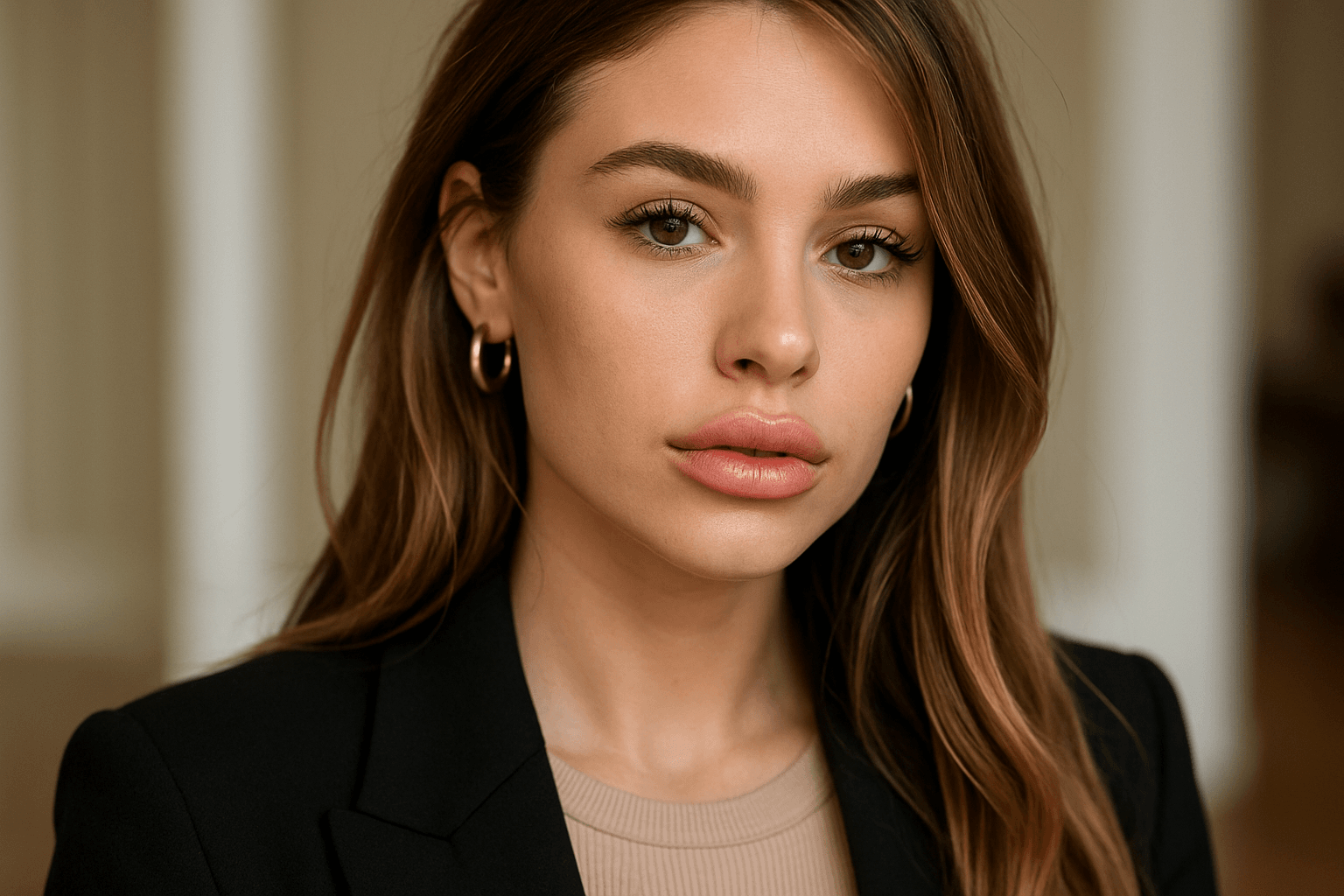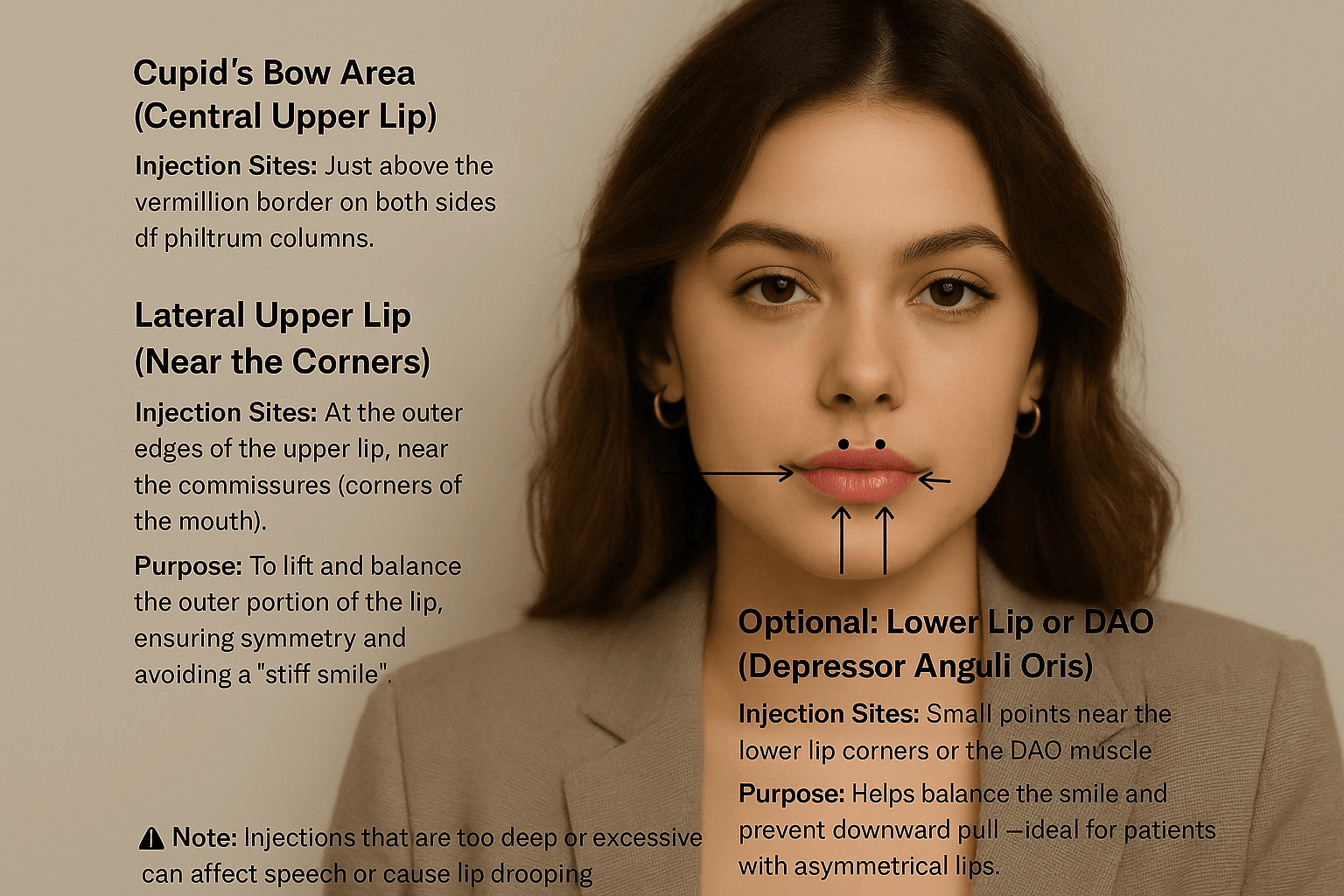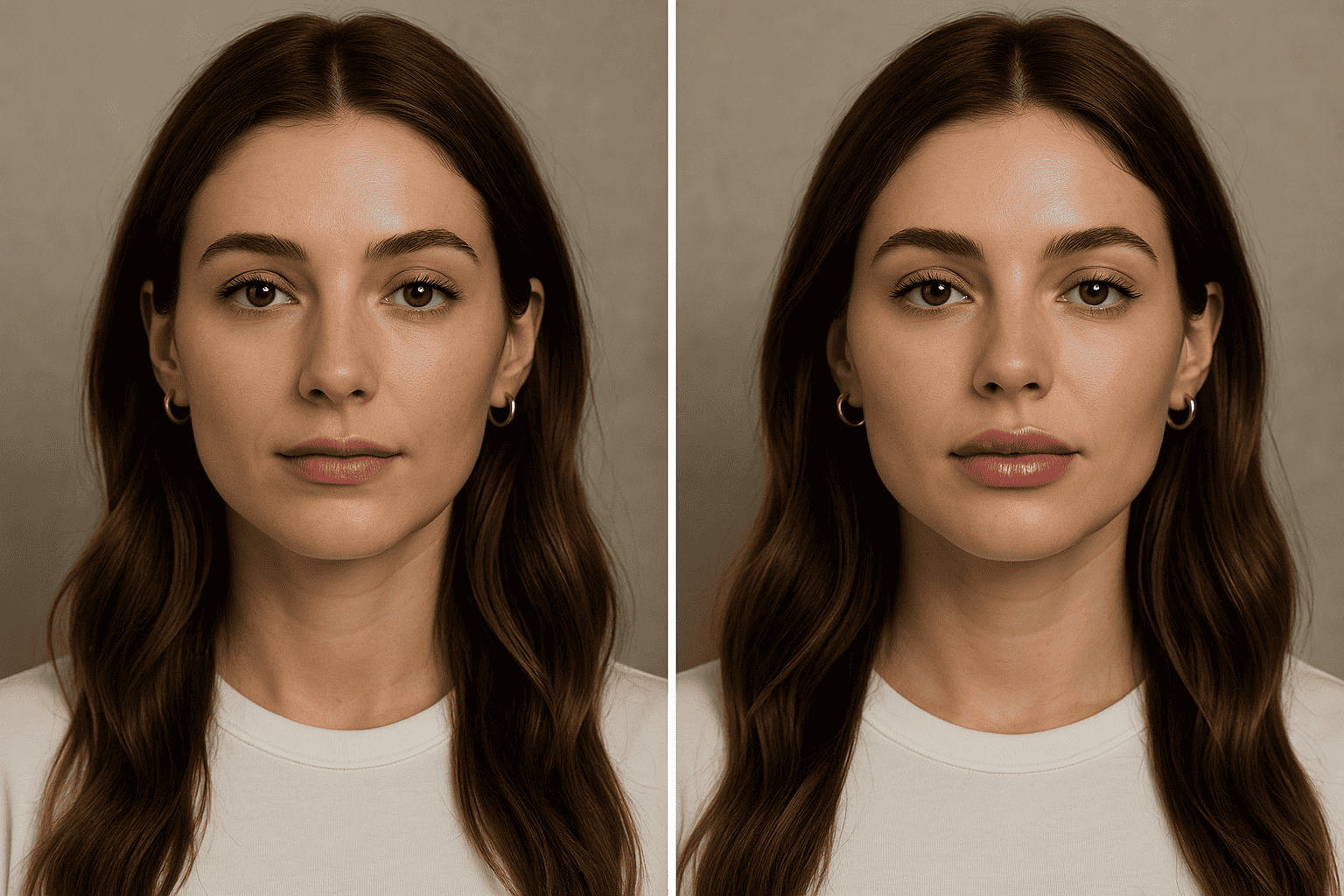
Brazilian Butt Lift Surgery in Turkey: Procedure, Safety, and Cost Breakdown
The Brazilian Butt Lift (BBL) has become one of the most in-demand cosmetic procedures worldwide—and Turkey has emerged as one […]
The Botox lip flip has become one of the most requested minimally invasive cosmetic procedures for those seeking a fuller, […]

The Botox lip flip has become one of the most requested minimally invasive cosmetic procedures for those seeking a fuller, natural-looking smile — without the volume of fillers. Unlike dermal fillers that add bulk, the lip flip uses small, strategic Botox injections to relax muscles around the upper lip, subtly “flipping” it outward and enhancing the lip line.
But achieving that perfect balance requires understanding facial anatomy and precise injection points. In this guide, we’ll explain exactly where Botox is injected for a lip flip, how it works, and what to expect — all backed by expert insights from aesthetic medicine.
A lip flip is a non-surgical cosmetic enhancement that uses Botulinum toxin type A (commonly known as Botox) to relax the orbicularis oris — the circular muscle surrounding the mouth. When these fibers slightly relax, the upper lip gently rolls outward, making it appear larger and more defined.
This creates a soft, natural “lift” of the upper lip without adding extra volume. The result? A subtle yet elegant enhancement, perfect for people who want a more defined smile line without looking “overdone.”
The success of a Botox lip flip lies in anatomical precision. The main target muscle, the orbicularis oris, functions like a ring — controlling movements such as speaking, smiling, and puckering. By injecting very small amounts of Botox into specific parts of this muscle, the practitioner relaxes tension in the upper portion, allowing the lip to curl upward.
Orbicularis Oris: The main circular muscle around the mouth that controls lip movement.
Levator Labii Superioris: Lifts the upper lip; relaxing surrounding muscles creates a more balanced smile.
Depressor Anguli Oris: Pulls the corners of the mouth downward — occasionally treated to improve symmetry.
Understanding the balance between these muscles ensures that only the right fibers are relaxed, maintaining natural speech and smile movements.

The lip flip typically involves four to six tiny injection points along the upper lip border and sometimes the corners of the mouth.
Injection Sites: Just above the vermilion border on both sides of the philtrum columns.
Purpose: To relax the upper central portion of the orbicularis oris, allowing the center of the lip (Cupid’s bow) to “flip” slightly upward for a lifted appearance.
Injection Sites: At the outer edges of the upper lip, near the commissures (corners of the mouth).
Purpose: To lift and balance the outer portion of the lip, ensuring symmetry and avoiding a “stiff smile.”
Injection Sites: Small points near the lower lip corners or the DAO muscle.
Purpose: Helps balance the smile and prevent downward pull — ideal for patients with asymmetrical lips.
The total Botox dose for a lip flip is minimal — typically 2–4 units per side, or around 4–8 units in total, depending on anatomy and desired effect.
⚠️ Note: Injections that are too deep or excessive can affect speech or cause lip drooping, which is why only trained medical professionals should perform this procedure.
The lip flip procedure is quick, virtually painless, and requires no downtime. Most patients notice visible improvement within 3–5 days, with full results appearing around two weeks after treatment.
Mild swelling or tenderness at injection sites (resolves within 24 hours)
Slight difficulty in puckering or sipping through a straw (temporary)
Natural-looking enhancement lasting 8–12 weeks on average
Because the dosage is small, results fade gradually and can be maintained through regular touch-ups every 3–4 months.

The difference between a stunning lip flip and an uneven result lies entirely in anatomical accuracy. A professional injector considers:
The thickness of the upper lip
The balance between central and lateral fibers
The patient’s smile dynamics
And even gender-specific facial proportions
By mapping muscle movement during facial expressions, the injector ensures the perfect balance between lift and function — creating a youthful yet natural look.
While both procedures enhance the lips, their techniques and outcomes differ:
| Feature | Lip Flip (Botox) | Lip Filler (Hyaluronic Acid) |
|---|---|---|
| Method | Muscle relaxation | Volume enhancement |
| Effect | Subtle outward curl | Added fullness and shape |
| Duration | 2–3 months | 6–12 months |
| Best For | Thin lips, gummy smile | Volume loss, defined borders |
| Downtime | Minimal | Mild swelling possible |
Many patients combine both for a balanced result — using Botox for lip shape definition and filler for volume.
For more insight into the difference between these two treatments and how to choose the right option, you can visit Healthline’s guide on Lip Flip vs. Filler.
Choosing a qualified injector is crucial for safe and beautiful results. Always look for:
Licensed dermatologists or plastic surgeons
Practitioners trained in facial anatomy and aesthetic injections
Verified patient reviews and before–after photos
If you’re considering a Botox lip flip, you can find and compare experienced specialists through Tabeebo — your trusted healthcare platform.
Tabeebo connects patients with certified cosmetic doctors, clinics, and hospitals across the Middle East and beyond, ensuring that every treatment meets international safety standards.
Botox doesn’t add volume; it enhances muscle dynamics. By selectively relaxing the upper lip’s superficial fibers, it allows the lip to “rest higher,” giving a fuller appearance without artificial projection. This makes the lip flip one of the most elegant examples of how facial anatomy and aesthetics intersect in modern cosmetic medicine.
When performed correctly, the procedure restores harmony, proportion, and confidence — all through just a few tiny injections.
A Botox lip flip typically lasts between 8 to 12 weeks. Because it uses very small doses, results fade gradually, and most patients choose to maintain the look with touch-ups every 3–4 months.
Discomfort is minimal. Most patients describe it as a quick pinching sensation lasting only seconds. The injector may apply a numbing cream or ice before treatment for comfort.
Yes — but it’s recommended to avoid rubbing or massaging the area for at least 24 hours after injection. You can eat and drink normally, but skip using straws for a day or two to prevent pressure on the treated muscles.
Most practitioners use 4 to 8 units total, depending on your anatomy and desired effect. This is much less than what’s used for forehead or frown-line treatments.
They’re different! A lip flip enhances the shape and visibility of your upper lip, while fillers increase volume. Some patients combine both for natural fullness with better definition.
Yes. By relaxing the upper lip muscles, a Botox lip flip can reduce gum exposure when smiling, creating a softer, more balanced smile line.
Pregnant or breastfeeding women, and individuals with neuromuscular disorders (such as myasthenia gravis or ALS) should avoid Botox injections. Always consult a licensed provider first.
Most patients notice improvement within 3–5 days, with final results visible after 10–14 days.
Summary